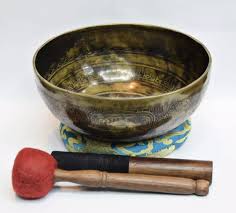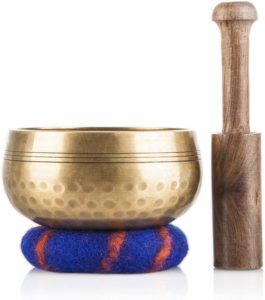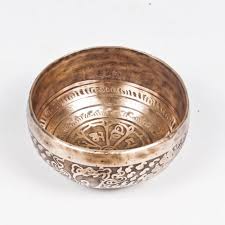History of a singing bowl | Origin of Singing bowl
History of Singing bowl: The first singing bowls were manufactured in Mesopotamia over 5,000 years ago. Likewise, singing bowls are believed to be one of the most pristine artisan adroitness in human history. The legend about the dexterities behind singing bowls remained in the later centuries but proper information of that legend unluckily no more exist along with the singing bowls’ following possessors. Their history (History of singing bowl) started at a time long before the beginning of modern civilization, with the consequence that written information about them is very near to inexistent.
The most ancient i.e. very first singing bowls were believed to be manufactured from pure copper and prepared for both medicinal and musical targets. They were made basically by the artisans in their dwellings. Metalwork knowledge was transferred from generation to generation, yet the sequence of this knowledge was broken. Later on, singing bowls began to be produced from brass, which is a mixture of some different types of earth metals, including copper. Some incidental information state that 2,000-year old brass singing bowls were found in Tibet at the beginning of the last century.
The testimony shows that the origin of the metal bell in China, during the Shang Dynasty between 16th to 11th centuries BCE. The bells made up of most ancient bronze were also available in China. The grain scoops with standard power were used to manufacture the bell. Here the word grain measure or Chung means bell which can be found in many ancient texts. The ‘Nao’ (early bronze standing bells) embrace some highest technical aptitudes of Chinese civilization which represents the most ancient known form of chiming bell.
Click here to join singing bowl Training Course
They made ‘Nao’ in different sizes beginning from 8 cm up to 50 cm. Its shape is like that of cavitary-stemmed goblets with a twirled rim. It was installed on its stem, to pummel on the external part with a mallet, and rim uppermost. We can find some differences in ‘Nao’ in Northern and southern China- in northern China, Nao was produced in chimed sets of three while in the south it was produced as single specimens. Some of them were made to produce two different ringing tones striking at two different points.

The history for the bronze bell of substantial size in China was approximate during 13th to the 11th century BCE. Sometimes singing bowl is also known as “Tibetan Singing Bowl”. It spread among Buddhism during the 2nd to 7th centuries CE. It made a novel foundation for large bell introduction which is used in different rite and ceremony. Cast-iron is also widely used to produce bells along with a bronze. Different variations of the singing bowl arrived much later so history of singing bowl is after history of bronze bell.
Some thinkers and writers have stated that the contemporary singing bowl progressed through the sequence of bowls basically used for food while assuming that to be illogical, stating that preparation of food bowls with thick rim with exalted focus on their acoustic significance would not be necessary.
The history of singing bowls’ with Tibetan origins have some ambiguity. It was said that the monks and nuns were not granted to converse anything about singing bowls although they could be found inside monasteries and homes. Therefore no information is provided about the bowl in the monks’ sacred text, called the Tibetan Buddhist Canon. There is an anecdotal reference stating that Tibetan lamas and monks used these bowls for special, sacred, secret rituals. It is also said that these rituals were supernatural and highly spiritual that gave the ability to the monks for astral projection and travel into different realms and worlds.

During the middle of the 19th century, the Chinese invasion of Tibet forced the lamas and monks to flee with all of their valued possessions, along with singing bowls. Poor lamas and monks were forced to sell their singing bowl including their other valuable other items in order to survive the crisis. This situation made singing bowls spread around the world, causing the esoteric acknowledgment about them to vanish.
Singing bowl with a wooden striker
Some people believe that ‘Tibetan singing bowls’ have history during shamanic tradition which was before the time of the Buddha. Yet, the bowls’ production and application for ‘singing’ (different from standing bell that is used by striking) are considered as a contemporary method. Almost all historical accounts and books are taciturn regarding the singing bowls’ music in Tibet. Perceval Landon (a visitor during 1903-4) has not mentioned (nor by any other visitor) such bowls his notes on Tibetan music.
The missionaries noted jiggling, dinging and ringing sounds in the Tibetan healing traditions but singing bowls are not mentioned. The notable issue on ‘Tibetan singing bowl’, and merchandised as Tibetan ceremonial objects, also known as “dharma manufactures” that is also believed to originate from Nepal or northern India. So they are not treated as Tibetan nor ceremonial/ ritual in emanation. It has a mysterious past and the exact origin is not completely known, although we have some clues to get the information which assumed to be closer to the truth.
If you are interested for singing bowl healing please click here

